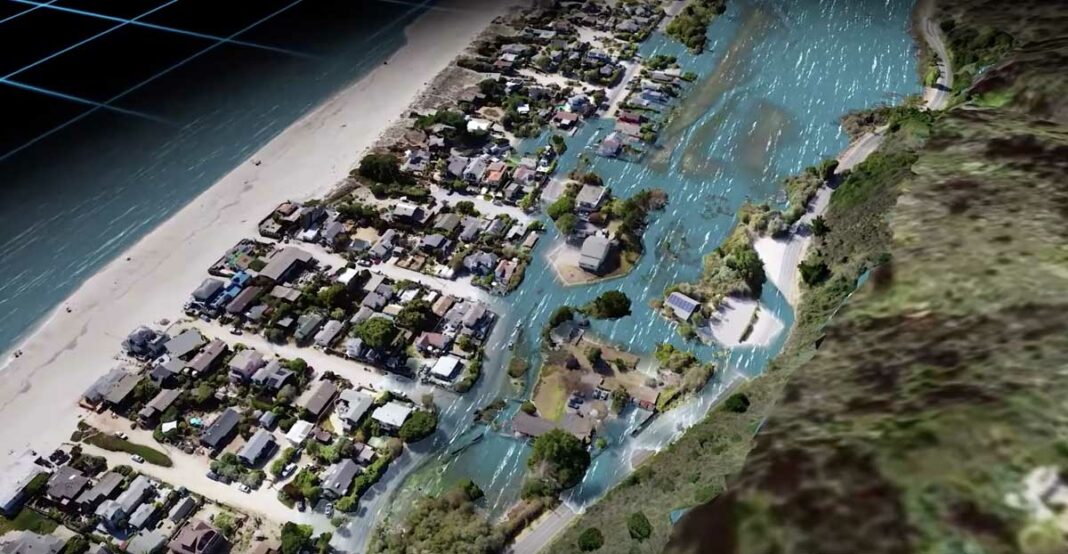Marin County has pulled out all the stops to help Stinson Beach residents and tourists envision the expected impacts of sea level rise.
In late April, as part of their latest public outreach effort, the Marin County Community Development Agency (CDA) published a 62-page report prepared by consultants from Environmental Science Associates. It serves as a localized update to a countywide report on sea level rise published in 2016.
In May, they published a video featuring renderings of future floods and then hosted a Zoom town hall followed by an in-person virtual reality experience at a local library branch.
Of course, residents of the low-lying community may have not needed all the tech-powered previews after their experience this winter.
“Stinson Beach felt the brunt of the January atmospheric rivers and storm surges; some properties sustained thousands of dollars in damage and the public beach was closed for three weeks to vehicles,” a May 8 county press release noted.
The report and an accompanying May 18 meeting were both concerned with the risks associated with higher tides, coastal storm floods and groundwater levels according to the latest climate science. Neither the report nor the meeting addressed what can and should be done about it.
Jack Liebster, a recently retired CDA planning manager who spent his career focused on protecting California’s coast, put it this way in a statement: “We need to know what the future might look like in order for us to plan for adaptations. We’ve been diligent and straightforward with the scientific realities as we look at all the ‘what ifs.’ At the May 18 meeting, it’s mostly going to be a summary of the new report and answer the question, ‘What if we do nothing?’”
The brief answer to Liebster’s question is that many of the buildings in the West Marin community, flanked by Bolinas Bay and Bolinas Lagoon—and bisected by Easkoot Creek—will be at increased risk in the coming decades.
By 2050, with 1.6 feet of sea level rise, over 450 buildings would be at risk of damage during a 100-year flood. That amount of sea level rise would also lead to a 33% reduction in the size of the beach during the summer, along with a 40% reduction in the size of the area’s wildlife-rich marsh habitat. The impacts are projected to worsen with the passing decades, with 6.6 feet of sea level rise expected by 2100.
Septic systems and underground utility lines, as well as some local roads and buildings, are already at risk of flooding.
During a question and answer session at the end of the May 18 online forum, some residents were ready to talk about possible solutions—but staff and consultants deftly wiggled out of any solid answers for the time being.
“We haven’t formalized a list yet of priorities, but that will be an outcome in our adaptation plan roadmap, which will prioritize what actions are needed first,” one staffer said when asked which mitigation projects will be prioritized.
Questions about managed retreat and what homeowners will have to pay for were similarly pushed to future meetings.
According to the May 8 statement, “CDA staff will work with its consultant team over the next year to identify and analyze feasible adaptation strategies and pathways, carry out stakeholder engagement, and identify possible funding sources for adaptation.”
Find more information, look up the Stinson Adaptation and Resilience Collaboration (ARC) online.









What? A PacSun article made up of a press release, a prepared statement, and an unnamed source? Come on, Editor. Readers expect more from this venerable newspaper.